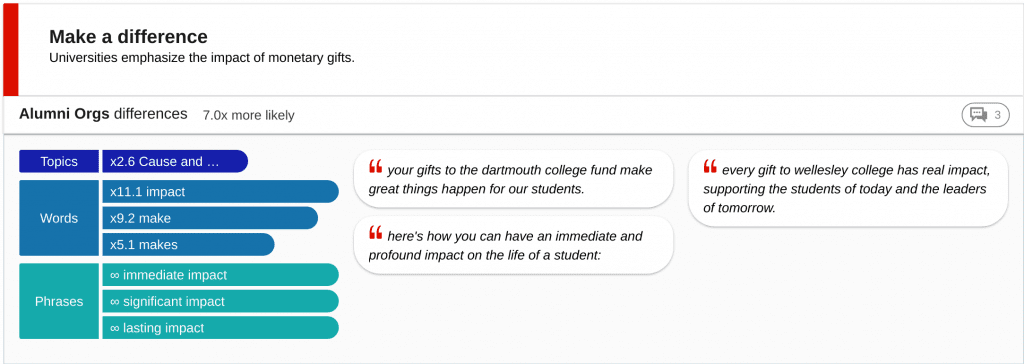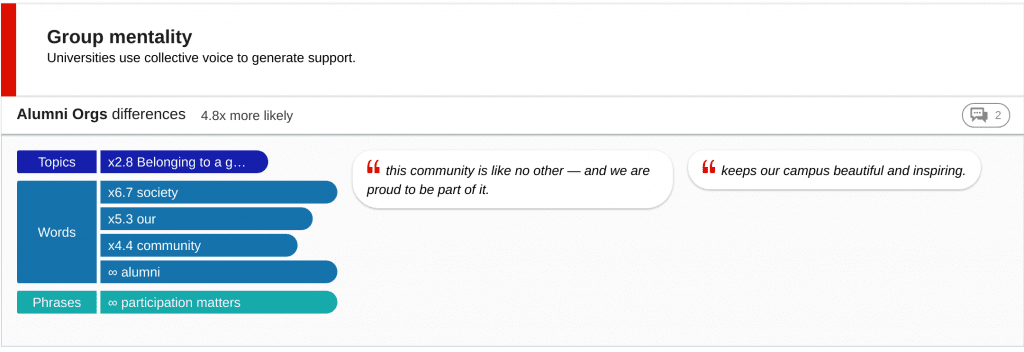How US universities elicit billions in alumni donations

US colleges and universities rake in nearly $50 billion (that’s a big billion with a b) from voluntary gifts every year. Of that, over $11 billion (still with a b) comes from alumni donations.
Once a student leaves university, institutions have fewer opportunities to communicate with and influence alumni. Post-grad communication through newsletter distribution and social media are the main tools universities utilize to maximize donations and elicit generosity.
Using Relative Insight, we wanted to pinpoint the most effective messaging used to bring in alumni dollars. Relative Insight compares two or more sets of written data to extract the differences in topic, words, phrases, grammar and emotion. For this project, we analyzed website copy from the ten colleges and universities with the highest percentage of alumni donations. This form of analysis will show us exactly what these schools are saying to generate support.
The results
All of the universities we analyzed use a limited vocabulary when discussing post-grad giving. Alumni donations are always referred to as gifts, and the act of donating is called giving or support. There is very little variation from these terms, providing consistency across messaging and employing emphasis through repetition.


Another heavily emphasized message we discovered was the use of forward thinking language. Donors are frequently encouraged to leave a lasting legacy for future students. This message appeals to both selfish and altruistic intentions. If we’re honest, the idea of leaving a legacy is rooted in self-interest, but flipping that and talking about creating “a better future” is more tied towards creating good for all prospective students.


Our analysis also found that donors are often encouraged to make an impact. It’s crucial to communicate how and where alumni donations are being allocated and appreciated. Donors need to be reassured that their money will be put towards a good cause.


Donors are frequently characterized using words like generous, charitable and philanthropic. Although universities are not charities, they’re careful to use this type of language to appeal to the humanity of donors and the desire to help those in need.


The last linguistic technique we uncovered is the use of a collective voice through using words such as our, community and society. Universities make prospective donors feel as though they are part of a larger community, which allows them to feel like they have contributed to shared goals, accomplishments and experiences when encouraging alumni donations.


As a huge source of income, the last thing universities want to do is offend or alienate potential donors. Through language, institutions craft specific and intentional messaging to appeal to different motivations for giving.
Relative Insight can analyze website copy for any industry – food, tourism, beauty and more. This insight helps us understand a brand’s unique tone of voice and persona used to attract customers.
